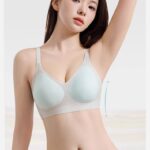A Journey Through the Hanfu Eras: Timeless Fashion
The allure of fashion transcends time, and the hanfu era is a testament to this enduring charm. As we embark on a journey through the various eras of hanfu, it’s evident that this traditional Chinese attire has not only withstood the test of time but has also evolved with grace and elegance. The hanfu era, spanning from the Han dynasty to the Ming dynasty, is marked by a rich tapestry of styles, each reflecting the cultural, social, and political nuances of their respective times.
Hanfu, a term that encapsulates the essence of Chinese traditional clothing, is more than just a garment; it’s a symbol of cultural identity and heritage. The evolution of hanfu is a fascinating study in the history of fashion, with each era contributing its unique flair to this timeless ensemble. As we delve deeper into the hanfu era, we uncover a narrative woven with threads of innovation, tradition, and artistry.
The Dawn of Hanfu: A Cultural Emblem
The hanfu era began with the Han dynasty, where it was not merely a form of attire but also a cultural emblem. The design and construction of hanfu during this period were heavily influenced by the philosophy of Confucianism, emphasizing harmony and balance. The flowing silhouettes and the use of natural dyes reflected a deep connection with nature, a characteristic that would continue to define the hanfu era through the centuries.
Silk and Splendor: The Tang Dynasty Influence
Fast forward to the Tang dynasty, and we witness a period of opulence and grandeur. The hanfu era reached new heights as the Tang dynasty’s prosperity allowed for the use of luxurious materials like silk. The intricate patterns and vibrant colors of Tang dynasty hanfu symbolized the cultural richness and the cosmopolitan nature of the time. This era’s hanfu also saw a departure from the traditional constraints, allowing for more freedom in design and silhouette.
Ming Dynasty: The Culmination of Hanfu Elegance
The hanfu era reached its zenith during the Ming dynasty, where the refinement of hanfu design reached its peak. The Ming dynasty hanfu is characterized by its intricate embroidery, sophisticated cuts, and the use of high-quality fabrics. The Ming era’s hanfu is a testament to the culmination of centuries of fashion evolution, blending practicality with an unparalleled elegance.
Modern Revival: Hanfu’s Timeless Appeal
In recent years, there has been a resurgence of interest in the hanfu era, not only in China but also globally. The timeless appeal of hanfu has captured the imagination of fashion enthusiasts and cultural aficionados alike. The modern revival of hanfu is a celebration of cultural heritage, a nod to the past, and a step towards the future. This resurgence is not just about wearing traditional clothing; it’s about embracing the spirit of the hanfu era and the values it represents.
Global Recognition: Hanfu on the World Stage
“Fashion is a form of expression,” said renowned fashion designer Vivienne Westwood, and the hanfu era is a powerful expression of Chinese culture. As hanfu gains global recognition, it’s not just a trend but a movement that highlights the beauty and depth of Chinese traditional attire. The hanfu era is a narrative that continues to unfold, inviting the world to appreciate the artistry and history behind each exquisite piece.







I’m a writer, and the hanfu era’s rich history is a treasure trove of inspiration for storytelling. The article has sparked so many ideas for me.
I’m a stay-at-home dad in Los Angeles, and the hanfu era has become a family project. We love researching the different styles and making our own hanfu at home.
I’m a student of design, and the hanfu era’s intricate patterns and silhouettes are a masterclass in craftsmanship. It’s a style I’d love to study further.
As a fashion critic, I appreciate the global recognition hanfu is getting. It’s not just a trend; it’s a movement that celebrates cultural diversity.
As a yoga instructor, I appreciate the comfort and flow of hanfu. The natural materials and loose fit make it perfect for movement.
I’m a fashion student in Paris, and the hanfu era has been a huge inspiration for my final year project. The blend of tradition and innovation in hanfu designs is something modern fashion can learn a lot from.
I’m a fashion historian, and the hanfu era is one of the most fascinating periods in fashion history. The evolution from the Han dynasty to the Ming dynasty is a testament to the enduring appeal of traditional clothing.
I’m a retiree living in Florida, and the hanfu era reminds me of the beauty of simplicity. The flowing silhouettes and natural colors are a breath of fresh air in today’s fast-paced world.
As a Chinese-American who grew up in the States, I find the hanfu era absolutely fascinating. The intricate designs and the way each dynasty added its own touch to the hanfu are mesmerizing. It’s like a living history lesson every time I see someone wearing hanfu.
I’m a young mother in Shanghai, and I love dressing my daughter in hanfu for special occasions. It’s a way to connect her with our rich cultural history.